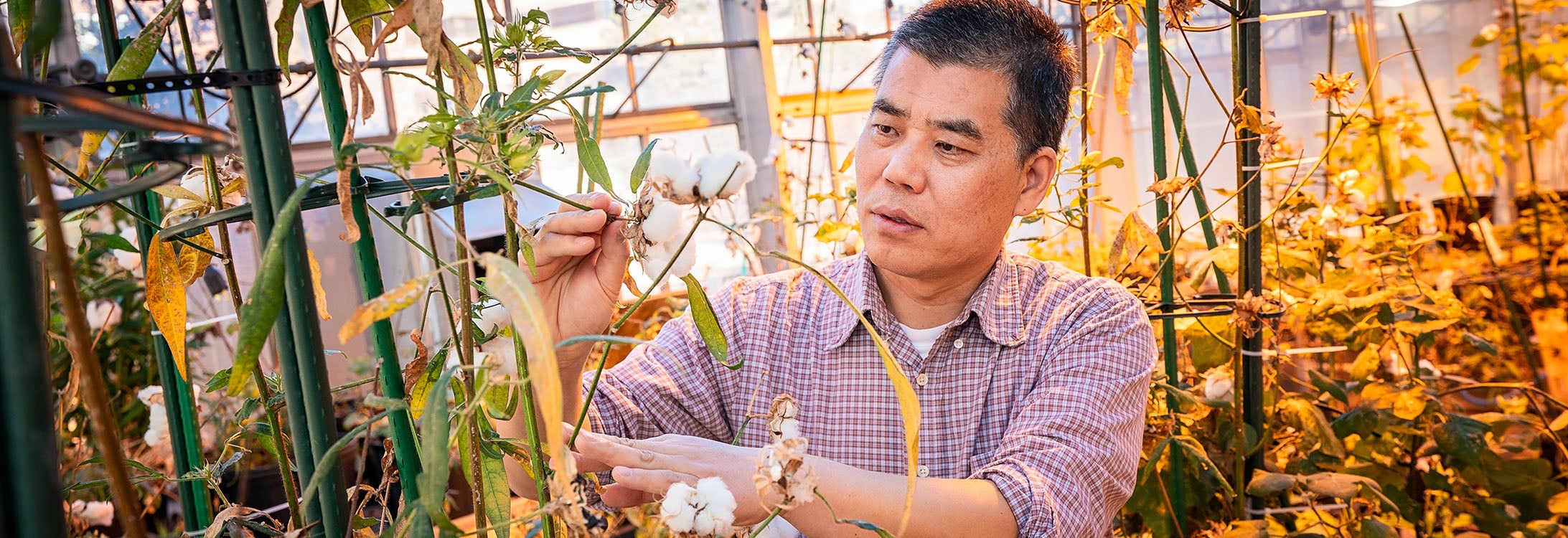DR. BAOHANG ZHANG
Lifetime Achievement for Research & Creative Activity Award
ECU biology professor Dr. Baohong Zhang has been recognized with several honors for his contributions in plant science, particularly for his discoveries on microRNAs and cotton biology.
Zhang’s research focuses on microRNAs and their role in gene regulation and expression. First recorded in 1993, microRNAs play a key role in a wide range of biological processes, including cell growth, development and stress response.
Zhang uses the genome-editing tool CRISPR/Cas9 to manipulate both protein-coding and microRNA genes and published the first paper in the cotton research field regarding the application of this tool to knock out a cotton gene. By “knocking out” certain genes to study their functions, he is able to shape how the plant produces the fibers used in clothing and other materials, while altering how cotton responds to outside stressors like extreme environments and climate changes. Zhang said his lab was the first in the world to successfully apply the CRISPR/Cas9 technology on cotton gene expression.
In addition to receiving ECU’s Lifetime Achievement for Research and Creative Activity Award, he was named the Thomas Harriot College of Arts and Sciences Distinguished Professor in November. He also was named a fellow to the American Association for the Advancement of Sciences, the world’s largest general scientific society and publisher of the journal, Science.
Zhang said if he can pinpoint which microRNAs and genes affect fiber growth, we can use that knowledge to produce higher crop yields.
Jay Golden, ECU vice chancellor for research, economic development and engagement, said the improvements in crop production Dr. Zhang is attempting to unlock will have major implications in the future of the industry.
After 12 years as a Pirate, Zhang added that he owes much of his success to his students and research partners.
During his time at ECU, Zhang has secured more than $800,000 as a primary investigator in research funding from federal agencies and industries including the National Institutes of Health, the National Science Foundation, the Department of Defense, Cotton Incorporated and DuPont, melding his basic scientific research with real-world industrial applications.

